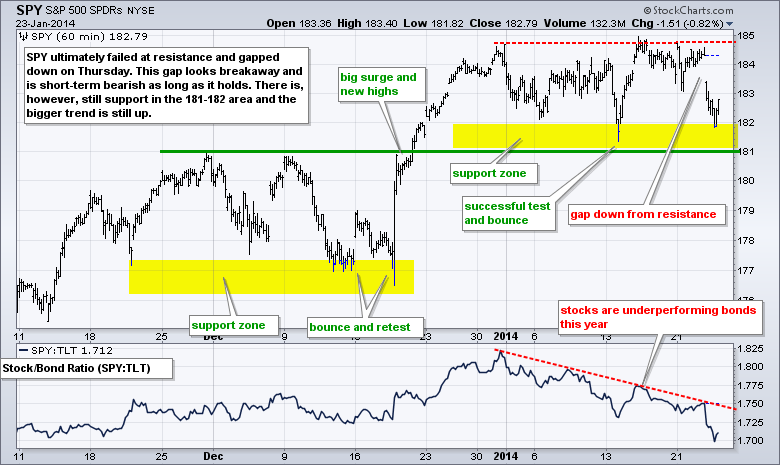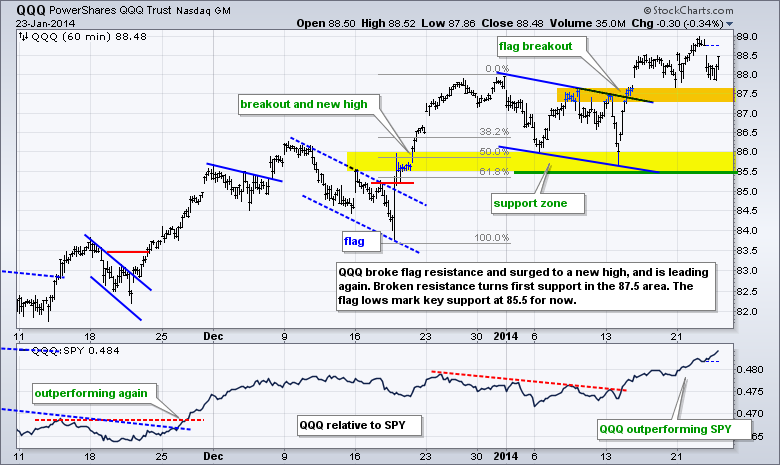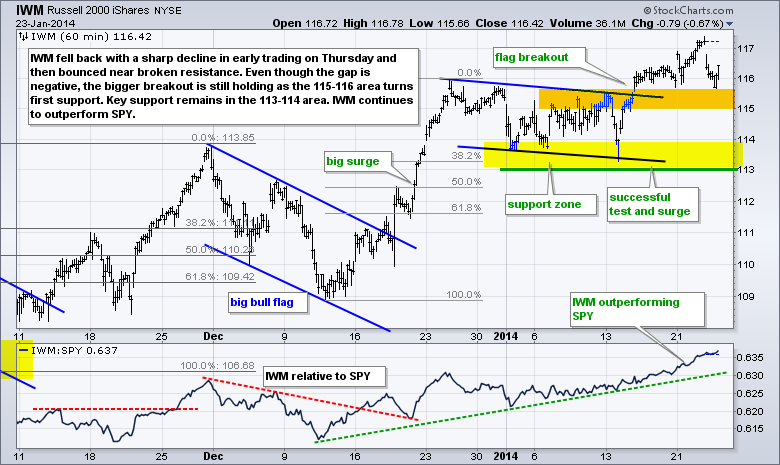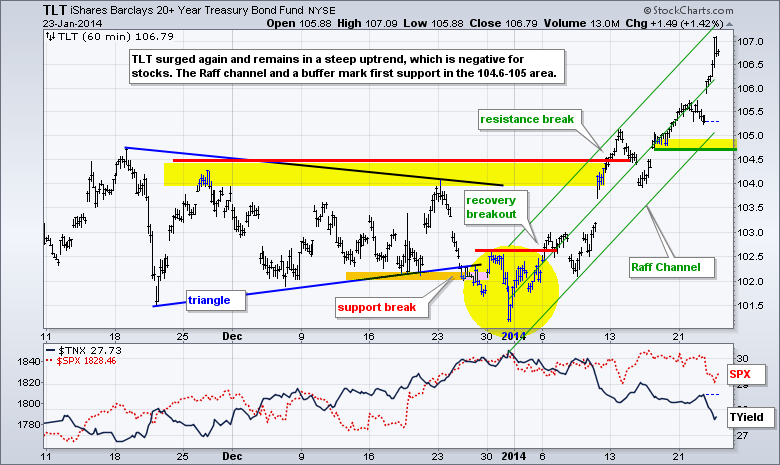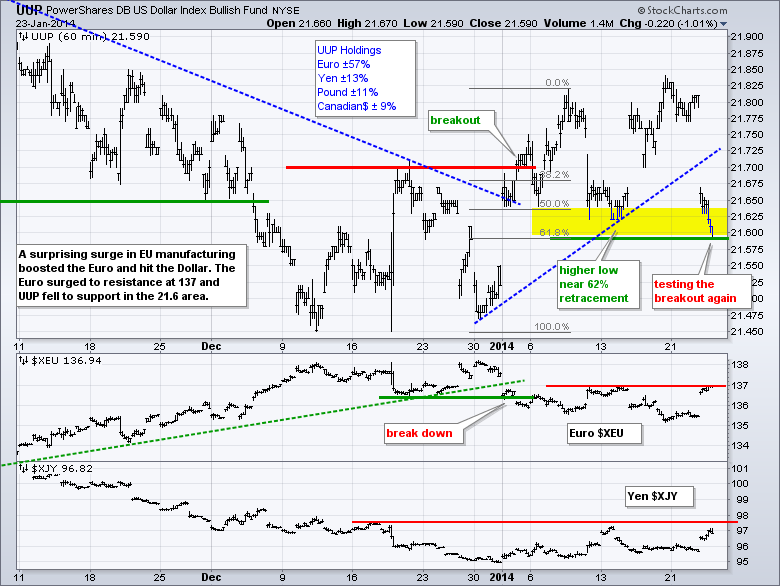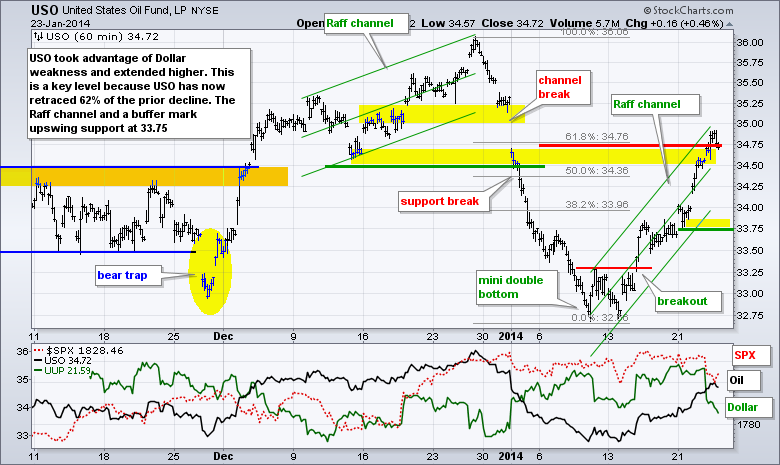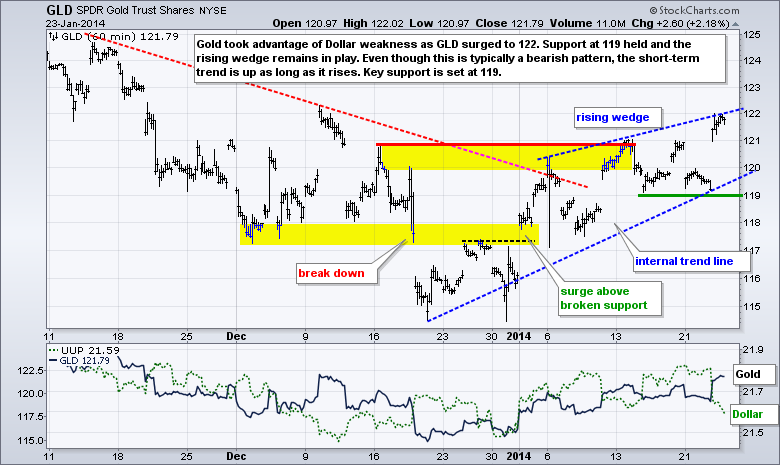Stocks got hit with selling pressure, but the declines were not that deep. The Dow Diamonds (DIA) led the way lower with a 1.08% loss. The Nasdaq 100 ETF (QQQ) held up the best with a .38% decline. All sectors were down with three of the four offensive sectors loosing over 1%. The Technology SPDR (XLK) held up the best with a .20% loss. The Home Construction iShares (ITB) managed a small gain and showed relative strength for a day. Gold surged as the Dollar plunged. The move in the Dollar also lifted oil, but energy-related shares decline. The Gold Miners ETF (GDX) and Silver Miners ETF (SIL) were strong with 2+ percent gains. Overall, the stock market is as mixed as ever and this means we can expect more choppy and volatile trading. Even though IWM and QQQ are holding their breakouts, SPY failed at resistance with a gap down. Strength in small-caps and techs is keeping the market afloat right now. This strength is countered by weakness in SPY, which is underperforming the 20+ YR T-Bond ETF (TLT) as some money moves into relative safety.
**This chart analysis is for educational purposes only, and should not
be construed as a recommendation to buy, sell or sell-short said securities**
**************************************************************
**************************************************************
**************************************************************
**************************************************************
***************************************************************
Key Reports and Events (all times Eastern):
Fri - Jan 24 - 07:00 - TGIF
Charts of Interest: Tuesday and Thursday
This commentary and charts-of-interest are designed to stimulate thinking. This analysis is
not a recommendation to buy, sell, hold or sell short any security (stock ETF or otherwise).
We all need to think for ourselves when it comes to trading our own accounts. First, it is
the only way to really learn. Second, we are the only ones responsible for our decisions.
Think of these charts as food for further analysis. Before making a trade, it is important
to have a plan. Plan the trade and trade the plan. Among other things, this includes setting
a trigger level, a target area and a stop-loss level. It is also important to plan for three
possible price movements: advance, decline or sideways. Have a plan for all three scenarios
BEFORE making the trade. Consider possible holding times. And finally, look at overall market
conditions and sector/industry performance.


